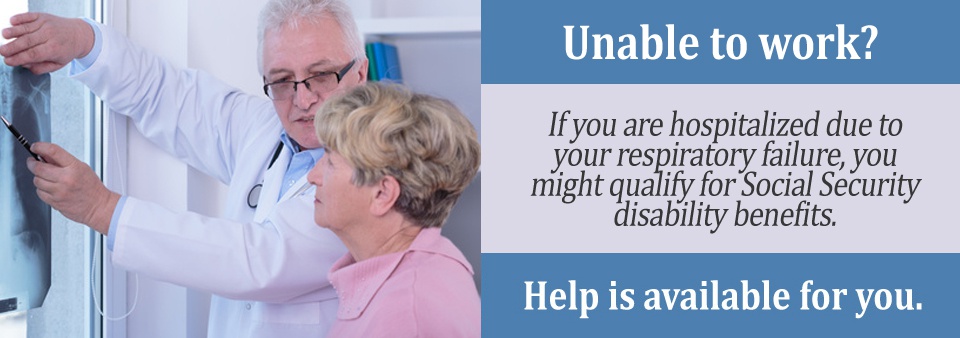If you have respiratory failure, there may be resources for you. You may continue to work for years without significant issues, even with a chronic respiratory condition. When your impairment progresses to the point of a respiratory failure diagnosis though, maintaining employment may no longer be an option.
At this stage, even if you weren’t able to qualify for disability before, you may now be eligible for benefits. Once you’re approved, disability from the Social Security Administration (SSA) provides consistent financial support, and although these benefits may not equal your former paycheck, they can ease your financial concerns.
Meeting the Disability Listing for Respiratory Failure
Disability listings, like the one for respiratory failure, appear in the SSA’s Blue Book, and Disability Determination Services (DDS) uses this manual to evaluate benefit claims. They will compare your medical records and other documentation to the respiratory failure listing in 13.14, and if you meet the terms of this listing, you will be found medically qualified for disability.
A respiratory failure diagnosis alone is not enough to satisfy this listing though. Instead, your medical records must contain specific documentation, including:
- Records showing the diagnosis and progression of an underlying, chronic respiratory disorder
- A worsening of symptoms over time, including an eventual diagnosis of respiratory failure
- Periods of hospitalization or treatment with either:
- Invasive, mechanical ventilation
OR
- Non-invasive ventilation along with BiPAP
OR
- A combination of BiPAP, non-invasive, and invasive, mechanical ventilation
- Invasive, mechanical ventilation

In addition to these specific medical records, the SSA also sets a timeframe for BiPAP and/or ventilation use. In other words, to be found medically eligible through the Blue Book, your periods of exacerbated symptoms must result in the need for breathing assistance:
- at least twice within 12 months
AND
- with a minimum of 30 days in between hospitalizations.
During each hospitalization, you must additionally require a minimum of:
- 48 consecutive hours of breathing assistance
OR
- 72 consecutive hours of breathing assistance, following a surgical procedure.
It’s crucial to note that this respiratory failure listing won’t apply to your claim, if the underlying respiratory disorder you have is Cystic Fibrosis (CF). The SSA has a dedicated disability listing for CF, which appears in 3.04. The eligibility criteria for CF respiratory failure appear in 3.04D.
Applying for Benefits and Getting Assistance with Your Claim
If you’re applying for Social Security Disability Insurance (SSDI), you may complete your full claim via the SSA’s online application portal. This same application may be used to commence a Supplemental Security Income (SSI) claim, though you’ll need to finish up with a personal interview conducted by an SSA representative, either at the local office or over the phone.
Tackling the claims process when fighting a debilitating illness can be overwhelming, but you don’t have to go it alone. Whether you meet the respiratory failure listing exactly or must fight to get an approval, a disability attorney or advocate can help. He or she can explain the application procedures and review steps and help gather the necessary evidence for proving eligibility. Your attorney can additionally field phone calls and other communications, and can represent you at an appeal hearing, if one is necessary in your case.